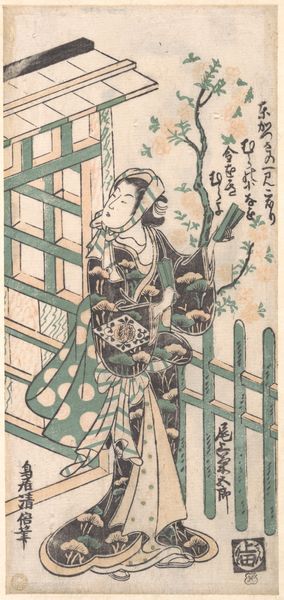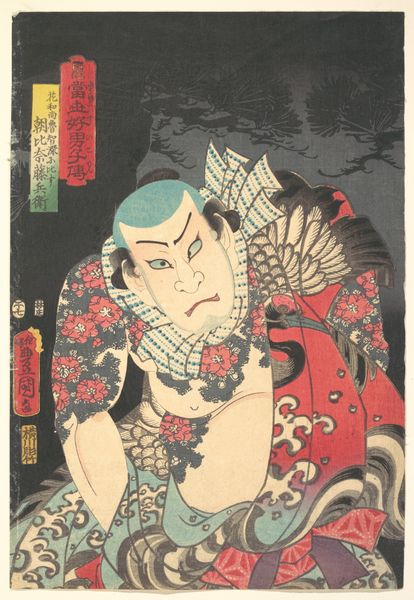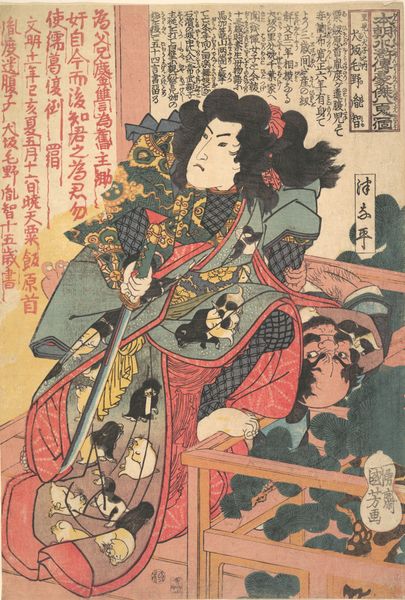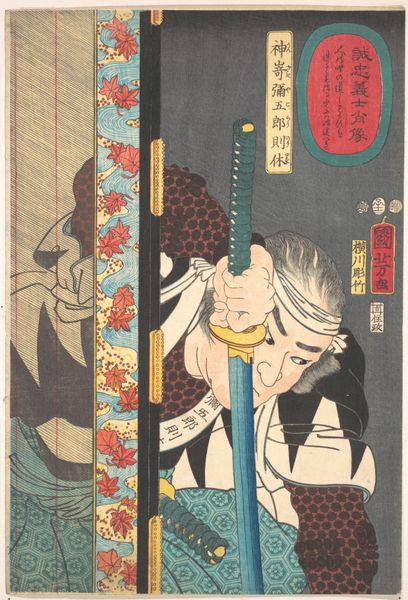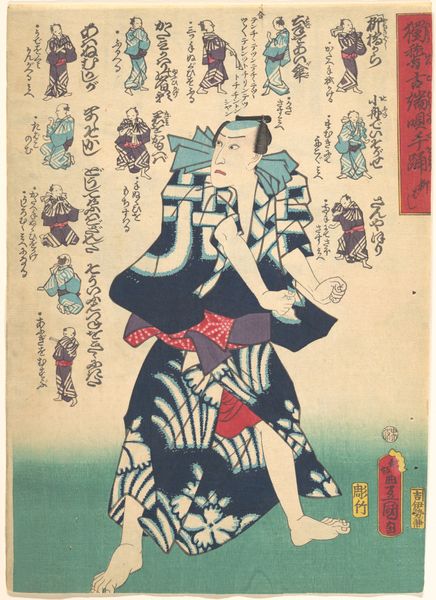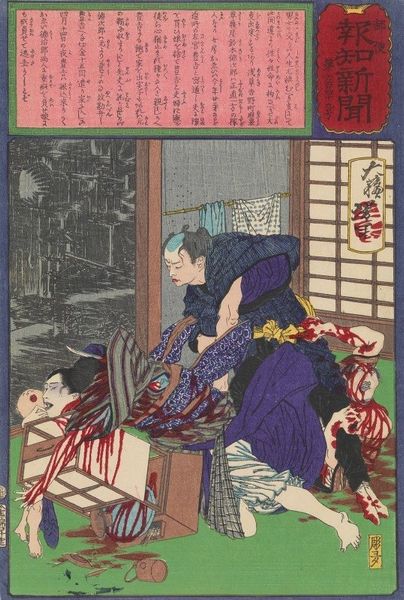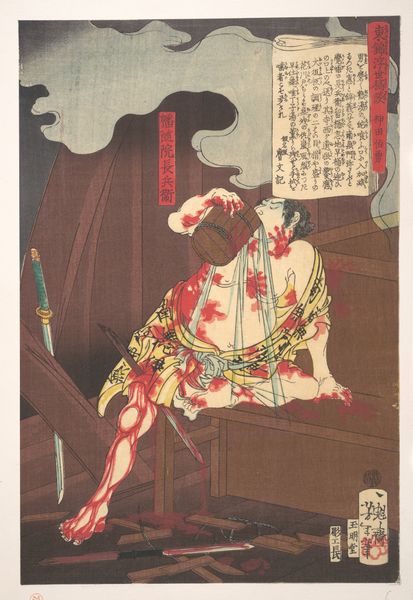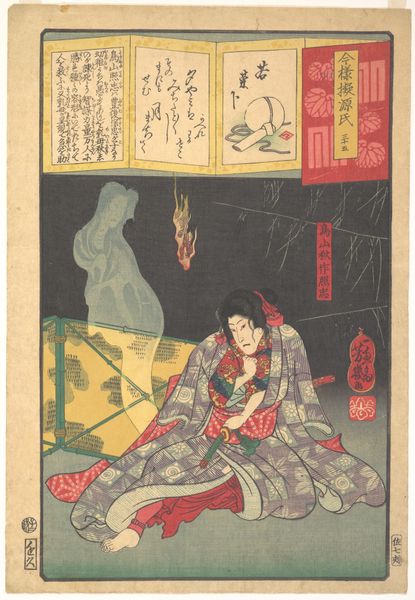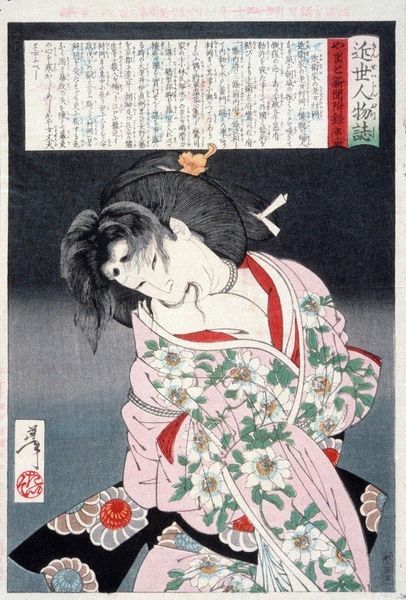
print, ink, woodblock-print
#
portrait
#
night
# print
#
war
#
ukiyo-e
#
ink
#
male-portraits
#
woodblock-print
#
history-painting
Copyright: Public domain
Editor: This is "Sugenoya Kuemon," a woodblock print made with ink by Tsukioka Yoshitoshi in 1868. It’s quite a dramatic image, isn’t it? The figure's expression and the blood… it's intense. What stories do you think are embedded in this print? Curator: Yoshitoshi’s images pulse with layered significance. What we perceive initially as mere graphic drama is meticulously composed, echoing cultural memory. The blood, stark against the subdued palette, doesn’t simply represent violence. Rather, it becomes a potent symbol, invoking themes of sacrifice, loyalty, and perhaps even the brutal realities of the Boshin War era. Consider the night as a motif; What feeling does the cover of darkness create? Editor: I can see that now. The darkness feels heavy. So the night, the blood… they aren’t just literal. They’re visual cues, almost like metaphors. What about that text up top? Curator: Exactly. Consider the symbolic resonance of *ukiyo-e*, reflecting a transient world. As for the text, inscriptions in such prints often served multiple purposes, providing narrative context but also functioning as aesthetic elements, harmonizing visual and textual components. Editor: That makes the work seem even more thoughtful than just visually striking. So it’s about history and emotions? Curator: Precisely. It’s a powerful condensation of socio-political tension and enduring cultural values rendered through carefully chosen symbols, asking us to consider the narratives we tell ourselves about sacrifice and honour. It invites contemplation about human fallibility under dire conditions. Editor: Wow. I hadn’t thought about all of that. Now I see it’s not just an image of war; it's like a mirror reflecting a culture's anxieties and ideals. Curator: Indeed. A cultural looking glass.
Comments
No comments
Be the first to comment and join the conversation on the ultimate creative platform.
